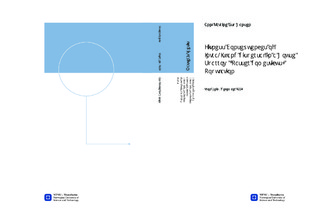Fitness Consequences of Intra-Island dispersal in a House Sparrow (Passer domesticus) Population
Master thesis
Permanent lenke
http://hdl.handle.net/11250/245182Utgivelsesdato
2012Metadata
Vis full innførselSamlinger
- Institutt for biologi [2571]
Sammendrag
Dispersing individuals have the ability to link fragmented populations to each other, and influence a wide range of ecological and evolutionary processes. Understanding the fitness differences between resident and dispersing individuals is important if we want to be able to understand how populations will response the on-going and future habitat fragmentation and climate change. Fitness consequences of natal intra-island dispersal was studied in a house sparrow (Passer domesticus) population on the island Hestmannøy. Hestmannøy is one of 18 islands in a house sparrow metapopulation study system in northern Norway (66°N, 13°E). Annual number of mates (in males), annual number of eggs (in females), annual number of fledglings and recruits, lifespan and lifetime reproductive success were used as fitness measures. There was an overall tendency for dispersing individuals to have a higher fitness than resident individuals. In analyses carried out for each sex separately the difference was however only significant for lifetime reproductive success in females. Residents and dispersers did not produce significantly different numbers of fledglings but dispersers produced significantly more recruits when the sexes were analysed together. The result contrast with fitness consequences of inter-island dispersal in the same insular house sparrow metapopulation (Pärn et al. 2009), indicating that dispersal scale (within or between populations) is an important factor affecting the fitness outcome of dispersing house sparrow in this metapopulation. I recommend future studies to focus on the differences between intra and inter-island dispersing individuals and the factors that causes the advantage offspring produced by a disperser has compared to offspring produced by a resident.
